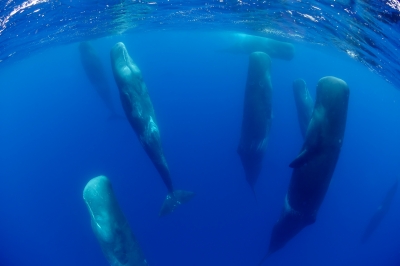
This depends on if the whale wants to remain in the shallows or dive deep. Typically, while swimming at a more shallow depth whales will come up for air every 5-15 minutes. But when making deeper dives or when they need to stay under for longer periods of time, whales will come up for air accordingly and can stay under for 30 minutes, 60 minutes or sometimes longer.
The deepest dive ever recorded was 2,992 meters which is just under 9,820 feet, roughly equating to about 1.8 miles. This record breaking dive was by a Cuvier’s Beaked Whale, which is also the species of whale holding the record for the longest time spent underwater on a single breath! As a comparison, the deepest human scuba dive on record was 1,090 feet deep.
While the Cuvier’s Beaked Whale tends to make deep dives, scientists say that this 2,992 meter dive is not typical and that on average Cuvier’s Beaked Whales tend to only dive to about 2,000 meters down. The sperm whale tends to dive to 1,000 – 2,000 meters, while humpbacks tend to stay above 200 m.
Whales breathe with their lungs, like all mammals. However whales do not breathe in through their nostrils or mouths like most mammals. Instead, whales have a blowhole located at the top of their head. This blowhole is a specialized nostril that allows whales to inhale air while at the surface.
The blowhole is covered by muscular flaps that cover the blowhole while the whale is under the surface to prevent the whale from breathing in water. The blowhole is connected to the trachea which passes air through to the lungs.
Whales also use their blowhole to exhale, where they will blow out air loudly and sharply, often expelling a stream of mist when they first reach the surface.
Credit : Wildlife Informer
Picture Credit : Google




